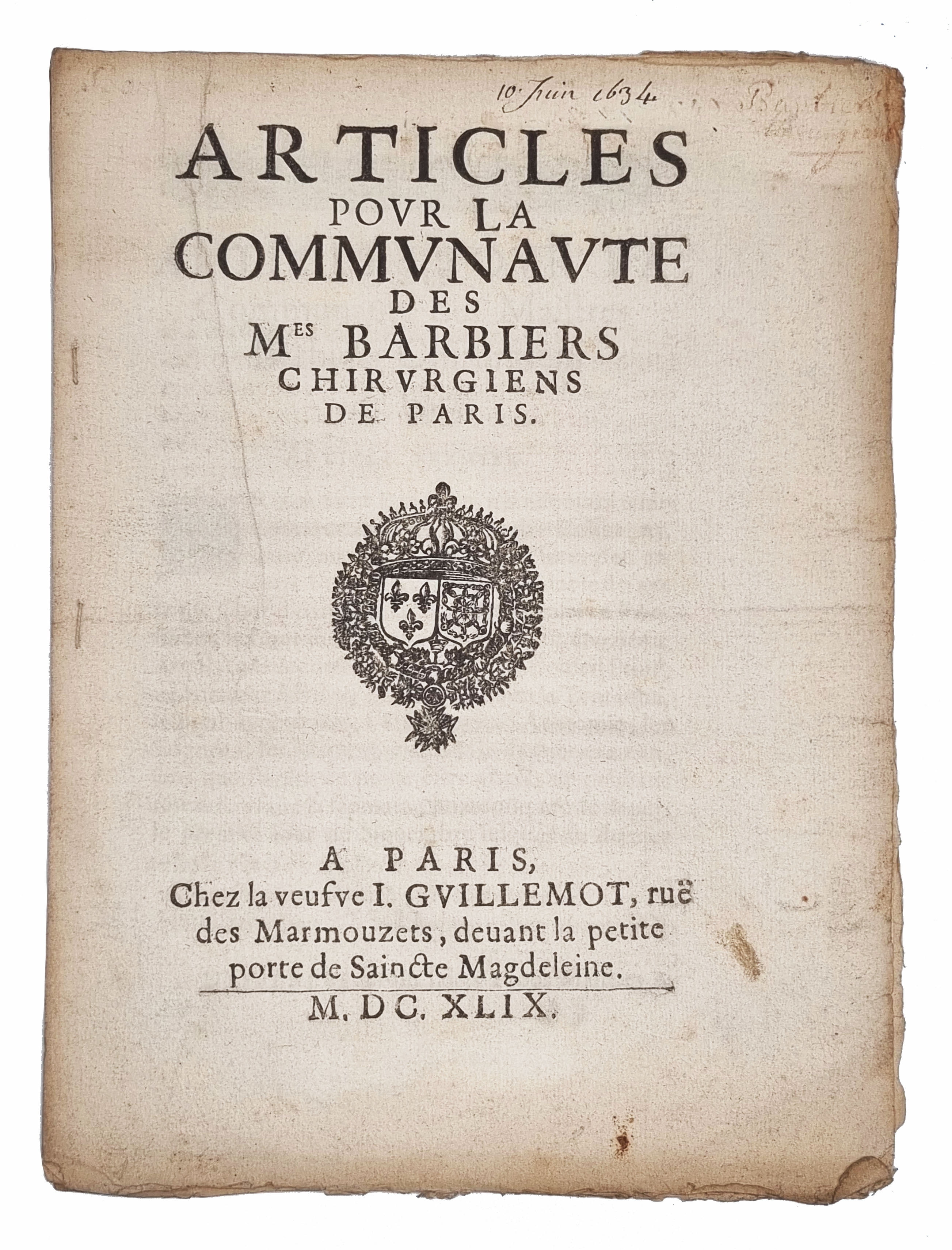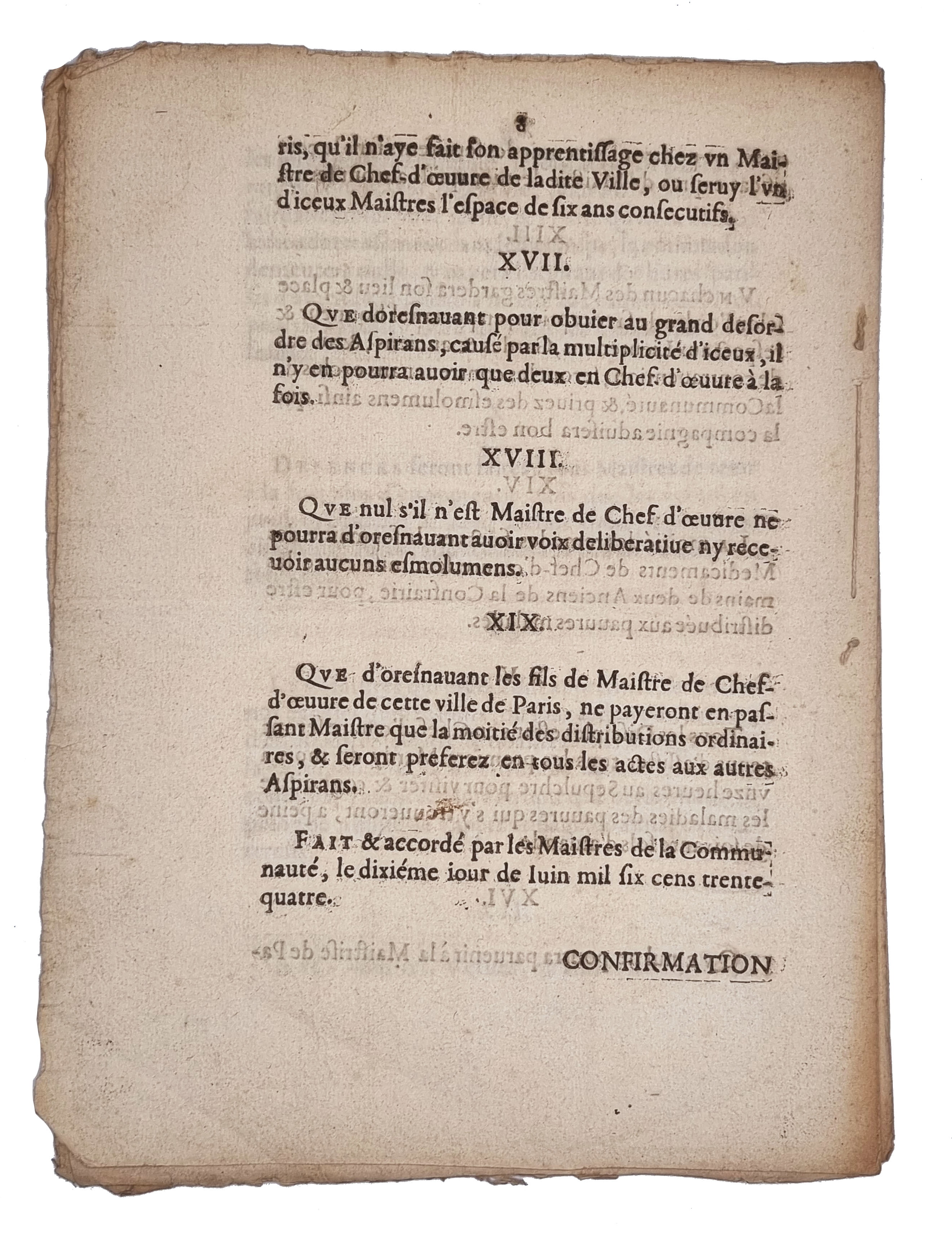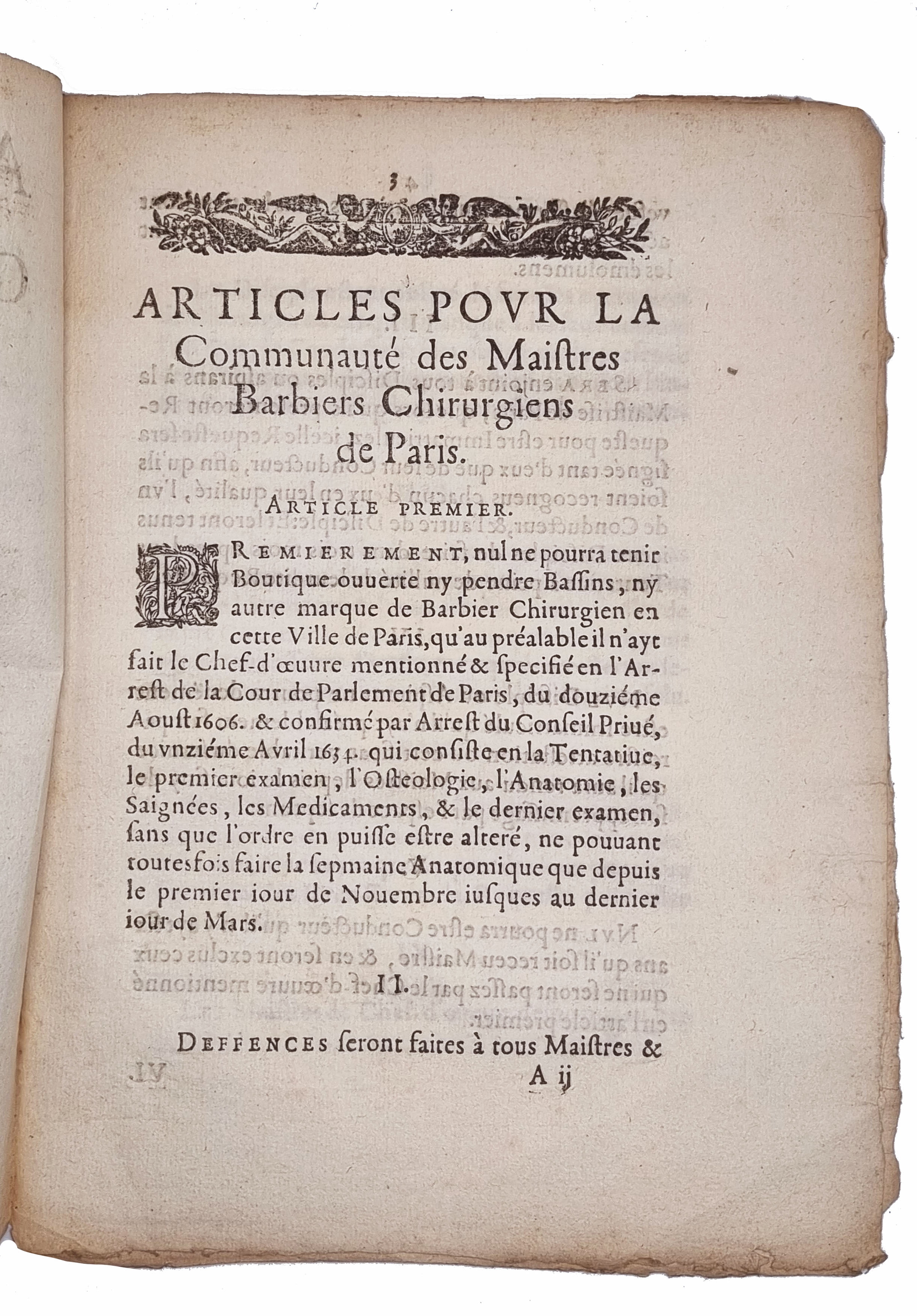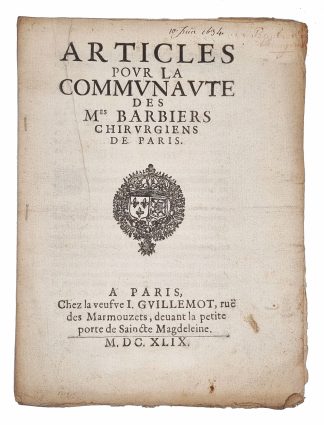[BARBER-SURGEONS]
NO RECORDED COPY
Articles pour la communaute des maistres barbiers chirurgiens de Paris.
Paris, widow I. Guillemot, 1649£1,850.00
4to, pp. 8. Roman letter, woodcut floriated initial, headpiece with putti and foliage, woodcut coat of arms of King Louis XIV and contemporary ms. date of the first edition “10 Juin 1634” to t-p. Very light age yellowing, a couple of finger-marks to t-p blank, untrimmed edge. A nice, wide-margined copy, disbound.
The sole recorded copy, clean and well preserved, of this unrecorded edition (first 1634) of the 19 articles regulating the status of barber-surgeons in Paris.
These statutes define and regulate their profession, with particular emphasis on apprenticeship training. For example, it is stated that Masters in the community of barber-surgeons can take more than one apprentice, that any aspirant surgeon will obtain a certificate after completing his training with a master, and that new masters are appointed each year. The text of the articles in this edition corresponds exactly to that of the first, and the catchword at the end of the last page suggests that the present copy lacks a final section containing a “Confirmation des statuts pour les maistres chirurgiens et barbiers de Paris” in which King Louis XIII confirms the statutes and the“Extraict des Registres de Parlement”. However, the important part of the work, the regulations governing the guild, is complete.
In Medieval times, surgery was largely a prerogative of barbers. Thanks to their ability and coordination in using razors, in addition to shaving, they were often also trained in performing simple procedures such as bloodletting and amputations. For a long time, however, their status as medical practitioners remained ambiguous, as surgery was considered a low-rank mechanical craft – in opposition to medicine, a liberal art – and barber surgeons would gain their learning outside the universities. During the Renaissance and particularly in France, barber-surgeons became more and more important, as well as capable to conduct more complex surgical operations. In 1491, the guild of barber-surgeons of Paris obtained the right to attend anatomy lessons at the Faculty of Medicine, and in 1603 masters barber-surgeons were given the legal the right to exercise surgery and “cure all kinds of wounds” by the Parliament of Paris.
Two other editions of this text are known. The first, undated, but 1634, and another with neither date nor printing place. Worldcat records only three copies of the former and one of the latter in libraries (Bibliotheque Nationale de France, New York Public Library, Bibliothèque interuniversitaire de santé).
This ed. not in USTC, Goldsmith, Worldcat and Library Hub. Unrecorded in the Bibliotheque Nationale de France and in other major French libraries.




